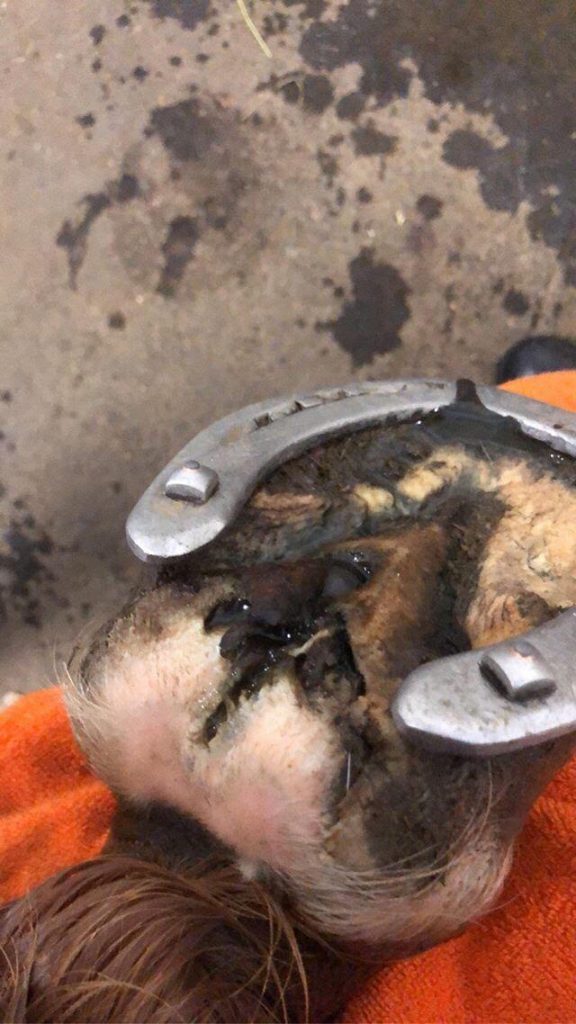Thrush
In thrush the frog deteriorates and eventually gets infected. Thrush is common especially in wet weather, like in autumn. A dirty stall, field, surface and ground conditions, like urine and manure, enhance the onset of thrush. Infection can be noted as softening of the frog, scraping of the frog and eventually black smelly secretions. If untreated, the infection can spread deeper to hoof tissue and become a chronic infection and even spread to tissues outside hoof.
The common cause of thrush is a bacterium living in nonoxygen (anaerobic) conditions. Regular cleaning of the hooves, letting hooves dry and good hygiene conditions are essential for the treatment and preventing thrush.
Thrush is treated in collaboration with farrier and when needed with veterinary. Farrier carves off the deteriorated and infected frog tissue and creates “ventilation” in order to get the secretion out. Local treatment of thrush includes bacteria killing (antimicrobic) treatment e.g., copper sulphate. The target is to keep the hooves clean and dry. Farrier is needed regularly to manage the frog during the treatment.
It is challenging to treat frog in the bottom of the hoof. It is not always possible to correct the harmful environment, which maintains the thrush. There is a risk that thrush develops into chronic infection and spreads deeper into the hoof. If the horse is only treated in the stable conditions, thrush that has invaded deeper into the hoof tissue is very challenging to treat. At worst, the situation may require treatment in clinic conditions. It is essential to treat thrush early. Treatment of thrush can easily take several weeks.
If the treatment is unsuccessful and the symptoms worsen, e.g., the thrush worsens, horse becomes lame and leg swells, calling a veterinary on site is necessary.
Many of the preparations used in the treatment of thrush are toxic, which damage and/or dry out and shrivel the frog tissue. These preparations can ease and get the thrush infection into control, but they might also partly or severely damage the frog tissue.
Derma14 Thrush thrasher oil is made of pure and natural ingredients. Derma14 is a proven, and efficient
and ecological support for the management of thrush in horses. The natural essential oils in
Derma14 help to purify and keep the hoof clean. Derma14 oil also supports the renewal
of frog with omega 3 and -6 fatty acids and with moisturising agents. Derma14 does not dry
and damage frog tissue. Derma14 solution is an excellent support for the management of damaged frog tissue.
Instructions: Start caring for the frog as soon as you notify softening of the frog and it becomes smelly. Clean hooves preferably 3 times a day carefully with hoof pick and brush off dirt properly from grooves. Do not harm soft frog tissue or dig grooves deeper with hoof pick. Ask farrier as soon as possible to come and carve frog properly. Apply daily, directly on the problem area and grooves and possible holes with Derma14 thrush thrasher. Organise a required schedule for the frog management by carvid with farrier. Aim of the management of thrush is that horse has dry and clean ground and surface. If possible, control the outside conditions so that horse does not need to stand in moist mud, manure and urine.


